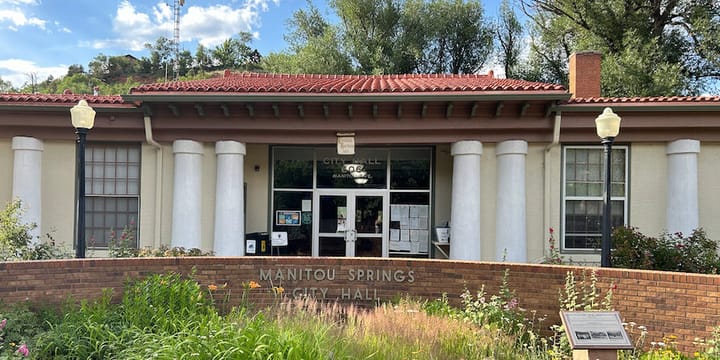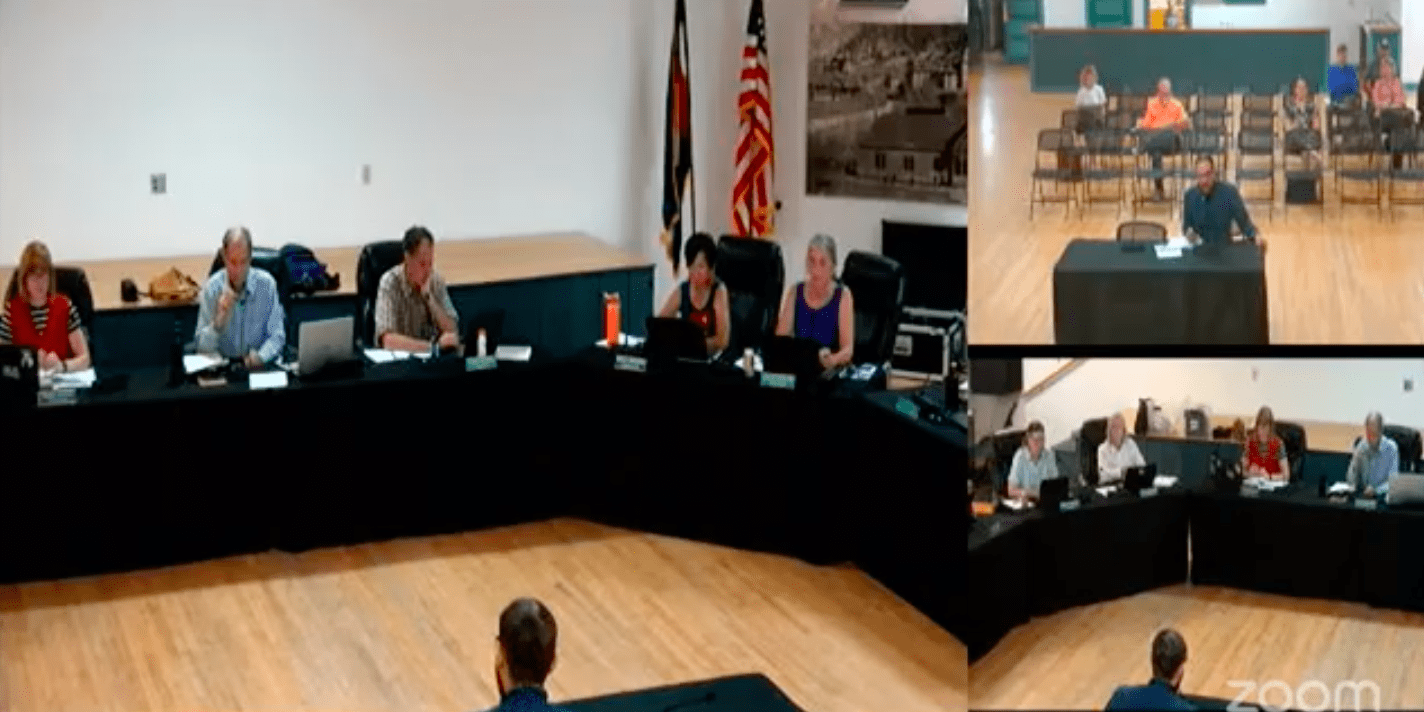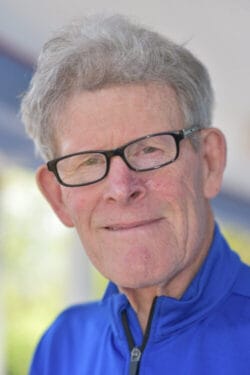Until Forever Comes: Pioneers Museum’s new exhibit honors the Ute People
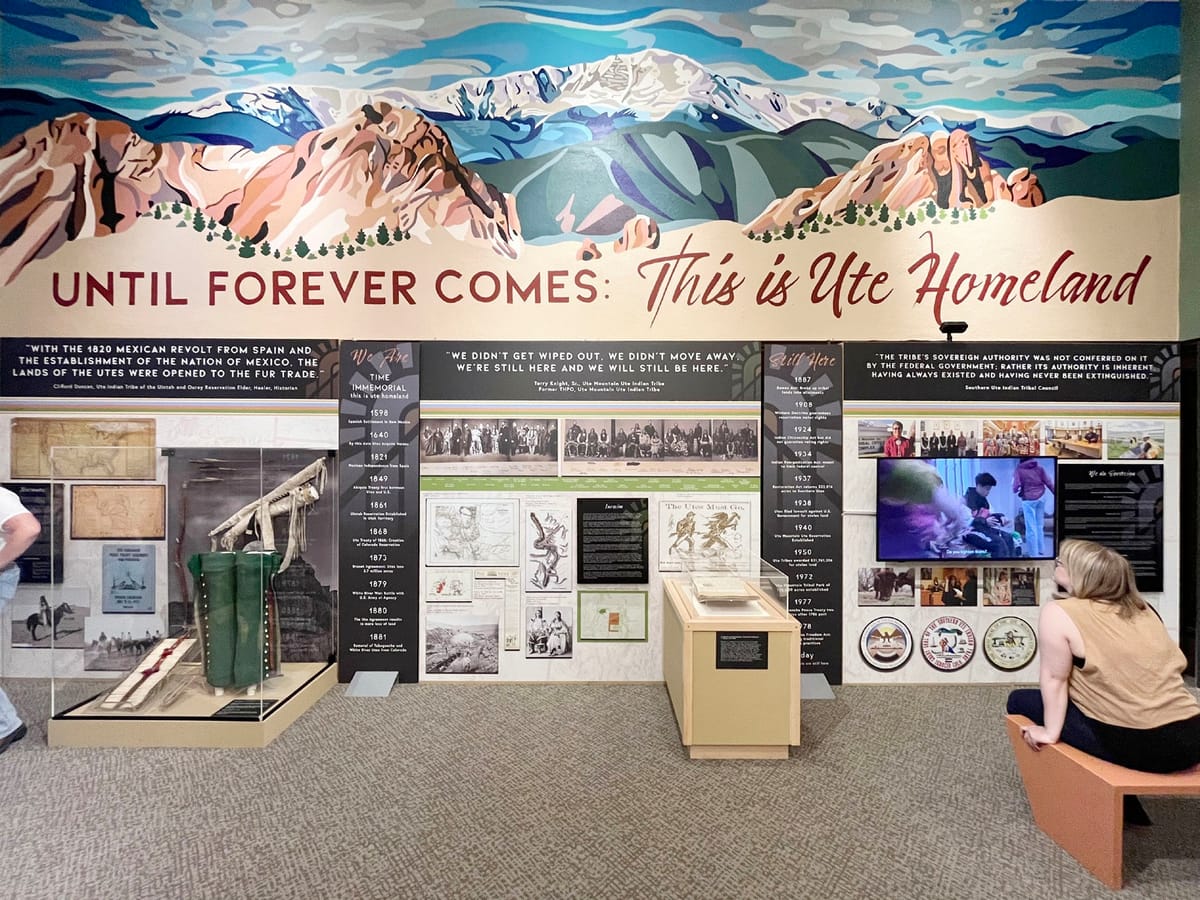
On June 12, the Colorado Springs Pioneers Museum opened its new exhibit "Until Forever Comes: This is Ute Homeland." The project was a culmination of over five years of consultation with the three sister Ute tribes: the Southern Ute, the Ute Mountain Ute and the Northern Ute (also referred to as the Ute Indian Tribe of the Uintah and Ouray Reservation).
The permanent exhibit speaks to the breadth of Ute culture. Among the different displays are variations of the Ute creation story as told by different tribes; a section on native plants used by the Utes for medicinal, culinary and hygienic purposes; and artwork from tribal members.
The day's events included traditional dances, interactive art and educational displays, and speeches from tribal representatives.
"History has been written by those who won the fight," said Shaun Chapoose, chairman of the Northern Ute Tribe, in a keynote speech.
Chapoose described how non-Ute perspectives have influenced the written history of Native peoples. When the Utes were moved to the reservations, titles like 'chief' became labels given by outsiders, including the U.S. government.
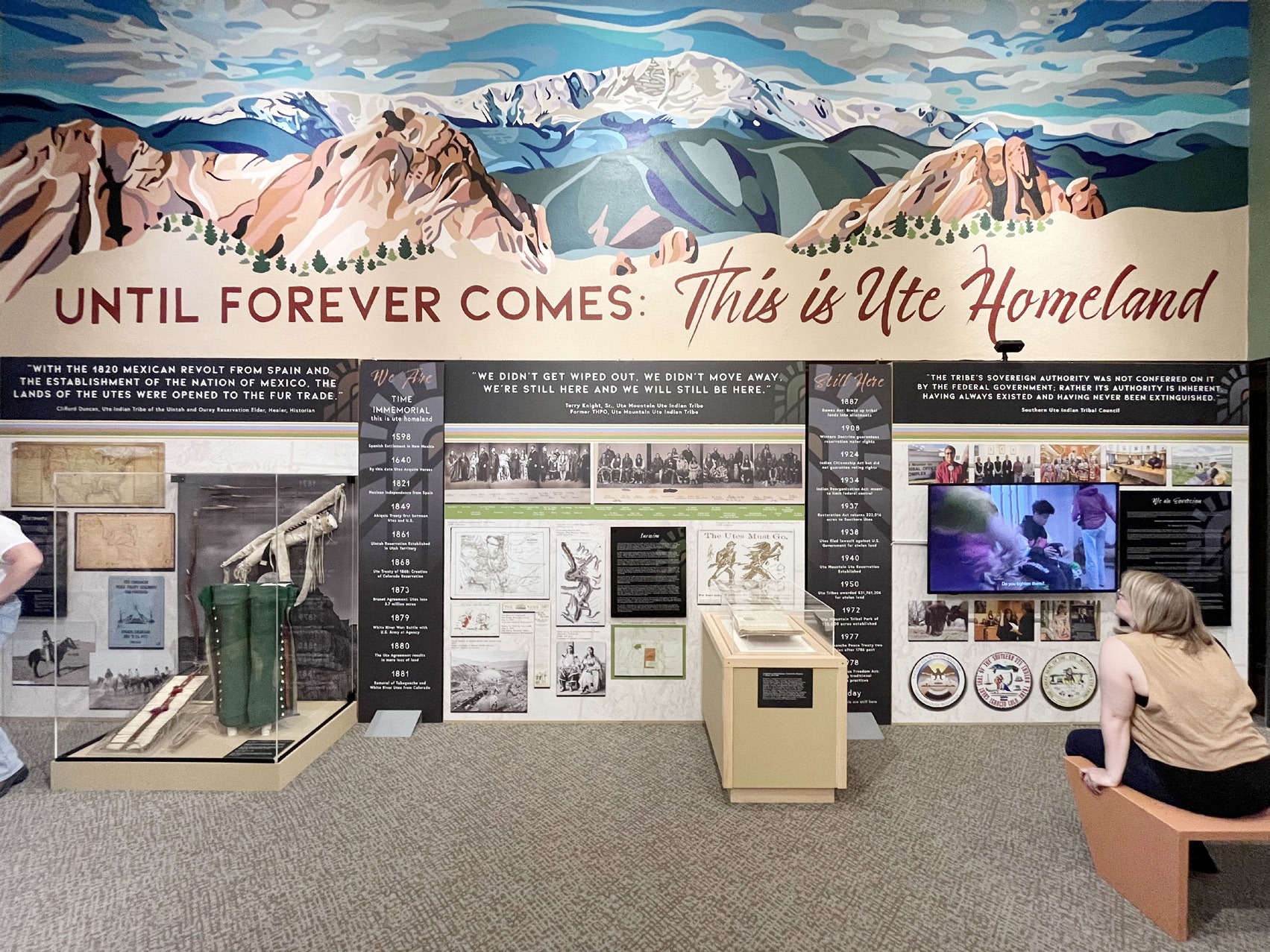
"There were no such things as chiefs in Ute culture. We had families who selected leaders for moments," he said. "They had to find a way to deal with us and that's how we got these so-called chiefs or leaders."
Chapoose spoke of the Ute's deep connection to the land, respect for all living things and natural resources.
"Some of that knowledge is going to become critical going forward as technology takes over. You can't drink your phone. You can't just drive to get your food. We're in an era where things are changing and I think if people were smart, we would pay attention to tribes," he said.
History has been written by those who won the fight. - Shaun Chapoose, Northern Ute Tribe chairman
"There's going to become a time where old knowledge will become more valuable than technology." Collaboration is key to preserving past and future
Anna Cordova, lead archaeologist for the city of Colorado Springs, shared how the city, over the last 30 years, has collaborated with official tribal representatives in its various projects to preserve Ute representation and culture in their ancestral land, including city parks like Garden of the Gods.
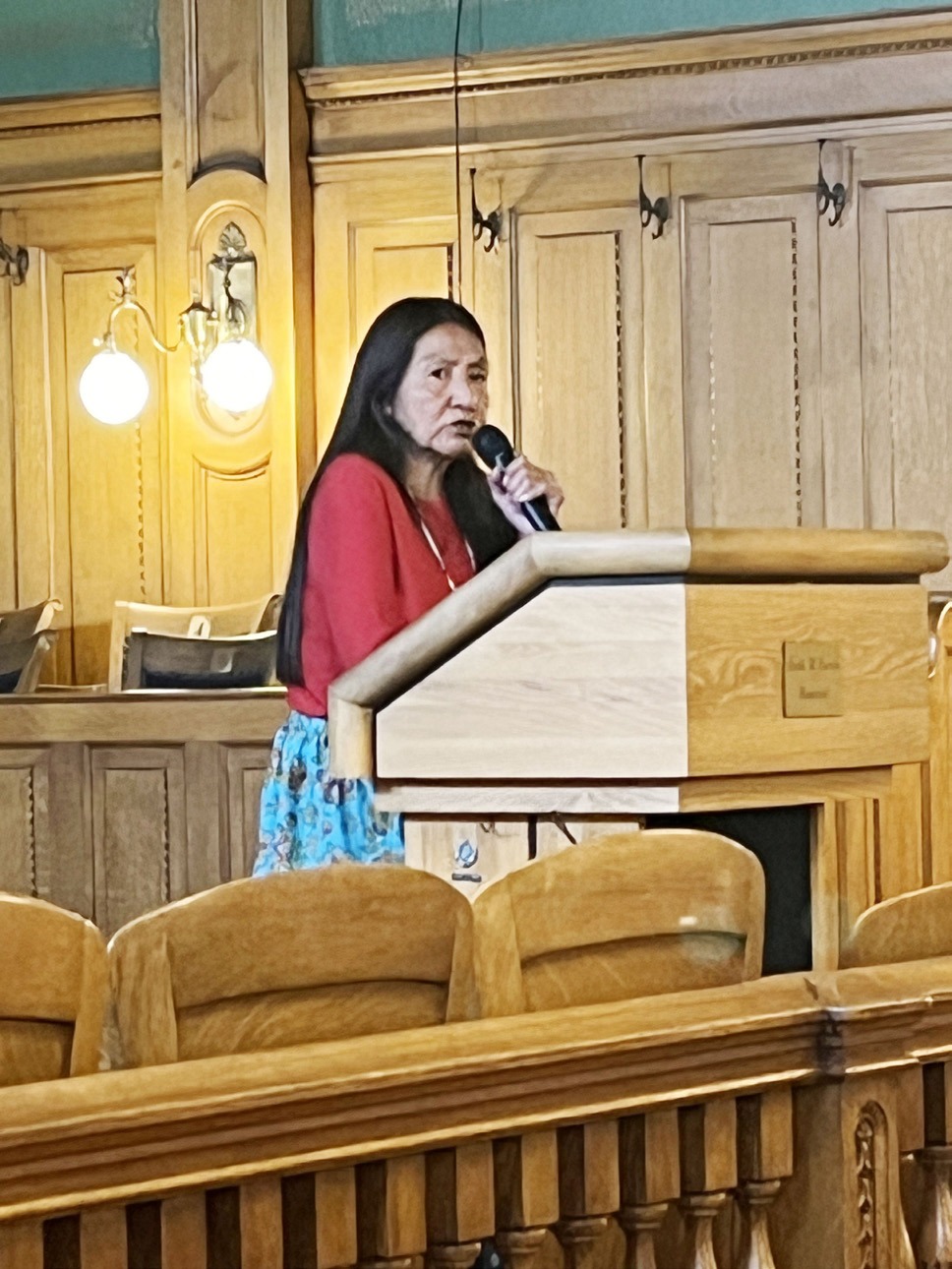
"Our message is always that they were here, they are here, they're still here, and they're very active in our managing decisions and how we steward these places," she said.
Echoing Chapoose, Cordova also spoke on indigenous values in this modern age.
"It's those old days when you live close to the land, you know how to take care of it, and so it's coming back to that … People are kind of waking up and realizing that we need to go back to a lot of that indigenous science and that way of stewardship."
Cassandra Atencio, a Southern Ute Tribe elder and former Tribal Historic Preservation Officer also spoke. She acknowledged the work of her parents and predecessors, including her father's involvement as tribal coordinator for the Native American Graves Protection and Repatriation Act (NAGPRA). The 1990 passage of NAGPRA required museums and federal agencies that receive federal funds to consult with Tribes to identify and repatriate Native American remains, funerary items, and objects of cultural significance held in their collections.
"They started something at that time, and we're just continuing that conversation, making sure they have a voice over here 20 years from now. Because that voice 20 years from now is not for us. It's for my grandkids; it's for my children; it's for your grandkids and your children, because the education is for all of us."
Atencio spoke on how Manifest Destiny and Westward Expansion led to the displacement of Ute people from their ancestral lands. Historically, the Ute migrated between higher and lower elevations in the mountains throughout the seasons. But as tribes were forced west and forced to adapt an agrarian lifestyle, it set the stage for the Meeker Massacre in 1879, which led to the expulsion of several Ute bands out of Colorado.
For the Utes, Pikes Peak and Garden of the Gods were sacred sites of worship, in contrast to the tourist and recreational attractions they are today. Through her parents and grandparents, Atencio learned to see the spirituality of these places even in gathering food.
"They said, 'You remember, it's prayer first. Always prayer first.' Because when you wake up, you're thankful that you woke up that day, that Creator allowed you to live …" she said, adding, "That landscape that we see … that was our church and it still is."
She also stressed the importance of passing down one's knowledge.
"It's important that whatever you're going to pass down, that you get it down in writing and teach somebody to do that," Atencio said. "Teach your grandsons, teach your sons ... teach the neighbor's kid."
Her own parents spoke little of their past, though she knew her father was punished in Catholic school for speaking his native tongue. Her grandmother, born in 1913, shared little of their difficult history. It was not until much later that Atencio began to hear the stories of hardship.
"I never got that story, and now we're just getting that story out," she said.
Among those in attendance were sisters Debra Box and Karen Box Anderson, both local residents and Southern Ute artists whose works are included in the exhibit. Their maternal grandfather was sent by Army escort to Northern Utah following the Meeker Massacre.
"I think it is important that you do talk about history, and so I do tell people you should learn about other cultures and experience other countries, even around the United States, because that's the only way you're going to learn to be tolerant of each other and understand each other," said Box.
For Box Anderson, this curiosity and exposure led her to see commonalities between her own culture and some of the nomadic cultures in the Middle East.
"They would travel all around, conserve water, conserve energy, not wasting. You see a lot of that and you think about your culture, too, and how everything was used - everything from the animals," she said.
If we’re not telling Ute history then we’re not telling history. - Leah Davis Witherow, Pioneers Museum curator
Also present was their 95-year-old father Austin Box, an Air Force veteran, member of the U.S. Martial Arts Hall of Fame, and the oldest current living member of the Southern Ute Tribe.
The elder Box recalled how the family, including grandchildren and great grandchildren, recently went to the cultural center and museum at the Southern Ute Reservation in Ignacio, CO.
"It had all the Ute languages, and they said, 'What does that mean? What does that mean?' I got to talk to them about what it means and everything," he said.
For the sisters, geographical distance and the loss of the older generations has made passing down their culture to the younger generation more challenging. Despite this, they see an interest from the younger ones. During the same trip to the reservation, to their surprise, one of the great-grandchildren took the opportunity to educate the family.
"He brought up all this stuff about bear dancing. He was telling us what it was," said Debra laughing.
Throughout the day's festivities was the recurring theme of telling Ute history through a Ute perspective.
"This is their story told in their work," said Leah Davis Witherow, the Pioneers Museum's curator of history. "This exhibit centers on Ute history and its ongoing beautiful culture in the Pikes Peak region. This is going to be a tremendous boon to the tribal members themselves but it's really cool for everyone in the Pikes Peak region. If we're not telling Ute history then we're not telling history."
Witherow's perspective resonated with Atencio's parting words about the importance of remembering and caring for these Ute stories and lands, passing them down to the youth and all whose lives their existence has touched.
"[The exhibit] is a way to keep that permanent, to keep it going, so you can see it, so they can see themselves," she said.
"I've talked about all these different places that are around here because they're important to us, and they're still important to us, and it'll be important to them so we can respect it, keep it here with us as long as we can, and it'll be good for all of us."
The Colorado Springs Pioneers Museum (215 S. Tejon St.) is open Tuesday through Saturday from 10 a.m. to 5 p.m.


